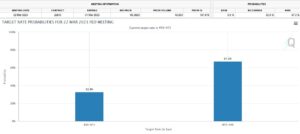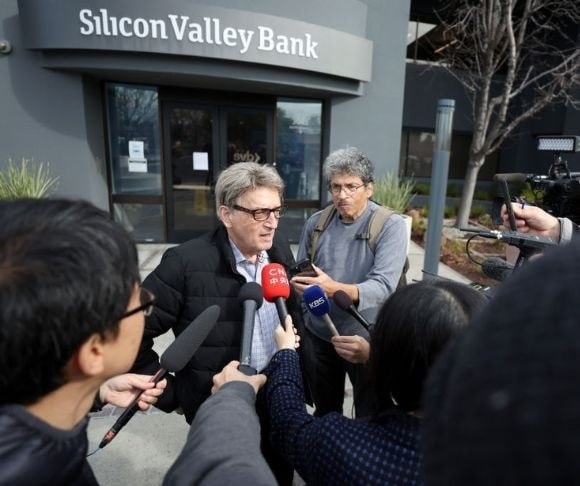The collapse of Silicon Valley Bank, also known by the cool kids of finance as SVB, has stoked fears that it could be the illiquid institution that breaks the back of the US banking system. With Signature Bank collapsing shortly after the fall of SVB, investors are selling shares in regional financial institutions and tepid bank runs have been popping up across the country. President Joe Biden has assured the nation, however, that everything is OK. That is, except for the part where it was all Trump’s fault, a calling card of the current administration. So, is the nation’s financial infrastructure in good shape, or is a contagion event genuinely possible in a climate of higher interest rates and a shrinking money supply?
The Biden SVB Plan
The powerful trifecta of the Federal Reserve, Treasury Department, and Federal Deposit Insurance Corporation (FDIC) released plans to help SVB and Signature Bank depositors. Customers can access their money as the FDIC’s deposit insurance fund will be utilized to cover uninsured depositors – since most accounts exceed the $250,000 limit on guaranteed deposits. The Federal Reserve will put together a new Bank Term Funding Program (BTFP) to support entities impacted by the SVB failure by offering loans of up to one year in exchange for high-quality collateral (Treasurys, mortgage-backed securities, and agency debt). Finally, the Treasury Department will provide up to $25 billion from its Exchange Stabilization Fund, although officials say it might not be necessary.
Small businesses can keep the lights on, pay their bills, and ensure employees receive their paychecks. Despite the immense payouts, President Biden confirmed that “no losses will be borne by taxpayers,” as the monies will come from banks that pay into the Deposit Insurance Fund (DIF). In addition, the president confirmed that if the FDIC takes over, bank management will be fired because “the people running the bank should not work there anymore.” Plus, investors will not be shielded from losses because “that’s how capitalism works.”
Biden took a moment to blame former President Donald Trump for rolling back some of the requirements on financial institutions without providing any evidence to support this assertion. He will now ask regulators and Congress to strengthen the rules for banks to ensure this does not happen again. “Look, the bottom line is this: Americans can rest assured that our banking system is safe. Your deposits are safe,” he said at the White House on March 13. “Let me also assure you: We will not stop at this. We’ll do whatever is needed on top of all this.”
So, is Biden right? Is now not the time to panic? Or should consumers do the opposite of the White House’s suggestion and begin to melt down like an old talkie documenting the 1929 crash?
To Panic or Not to Panic
A plethora of regional banking stocks collapsed to kick off the trading week, with many of them getting halted as part of the limit-down procedure on the New York Stock Exchange. First Republic Bank, expected to be the next domino to fall in this saga, tanked 65%. PacWest Bancorp plunged 25%, Western Alliance plummeted 51%, and Zions Bancorp tumbled 13%. There have also been widespread reports of deposit outflows at these institutions, with clients trying to shield their capital from uncertainty.
However, the broader financial markets rallied on increasing expectations that the Federal Reserve will either hit the pause button on its tightening cycle or cut interest rates. While this might signal that there are liquidity challenges gripping the banking system, investors are relieved that Chair Jerome Powell and his merry band of Federal Open Market Committee (FOMC) policymakers would – for now, based on the direction of the futures market – allow the rate hikes to continue traveling through the system and assess the situation.
 This answers the common question, “Why did Silicon Valley Bank fail in the first place?” The Fed and its global central banking counterparts have placed enormous stress on the financial system by initiating a crusade of rate hikes and balance sheet reduction following a decades-long era of cheap money through artificially lower interest rates and money-supply expansion. Suffice it to say, the current banking infrastructure has been unable to withstand the barrage of rate hikes.
This answers the common question, “Why did Silicon Valley Bank fail in the first place?” The Fed and its global central banking counterparts have placed enormous stress on the financial system by initiating a crusade of rate hikes and balance sheet reduction following a decades-long era of cheap money through artificially lower interest rates and money-supply expansion. Suffice it to say, the current banking infrastructure has been unable to withstand the barrage of rate hikes.
That said, investors are relieved that the US government is acting to prevent a contagion spread. JPMorgan Chase is also chipping in to stop a broader collapse from happening. But the chief problem is the balance sheet of these entities. So, for example, First Republic Bank does not possess enough high-quality collateral, like Treasurys and agency debt, to qualify for the rescue package from the current administration, leaving uninsured depositors vulnerable to failure.
Although the White House says that taxpayers will not endure any costs, depositors from healthier banks are subsidizing customers at other institutions. Instead of the government intervening, a common argument presented is that the bank’s assets should be sold off and the proceeds allocated to depositors. This is comparable to the situation whereby JPMorgan Chase purchased Washington Mutual’s assets 15 years ago.
Another question is: What if the FDIC’s fund does not have enough reserves to bail out these troubled banks? Taxpayer dollars would almost certainly be required to prevent further deterioration of the banking system in that scenario. The DIF balance was about $128 billion as of February 2023. Ninety percent of the SVB deposits were uninsured, totaling more than $151 billion. If other banks are also on the brink of falling, it could trigger a more significant problem.
Now, the president demands greater regulation to keep the banking system intact and more robust, casting blame on former President Donald Trump. But while this might seem accurate on the surface due to the previous administration’s deregulatory efforts, experts aver there is no foundation for Biden’s supposition. In fact, some economists contend that Trump had enhanced the rules of the landmark Dodd-Frank legislation, with more banks facing stringent regulations and higher costs.
Blame the Fed

(Photo by Justin Sullivan/Getty Images)
Republicans will blame Biden. The 46th president will say it is Trump’s fault. Democrats will claim that SVB, Signature Bank, and Silvergate shuttered all because of capitalism. The reality? It is the Federal Reserve’s ultra-loose monetary policy since the Great Recession that has enabled irresponsible behavior. Easy money has been the standard in the US financial system and broader economic landscape for years. When the stock market enjoyed an enormous rally, driven mainly by value acceleration in the tech sector, it was primarily caused by near-zero policies and the Eccles Building’s infusion of trillions of freshly created dollars. SVB’s problem was that it took on too much risk in tech and venture capital investments and attempted to balance this with low-risk assets (long-term bonds). As a result, when the bond market crashed amid the Fed’s rising-rate efforts, so did SVB’s balance sheet.
The futures market anticipates that Powell and Co. will take a break from rate hikes. But what happens to the banking system if inflation continues to run roughshod on the US economy in the coming months, resulting in revived tightening? The answer might rest in an accountant’s nightmares.




